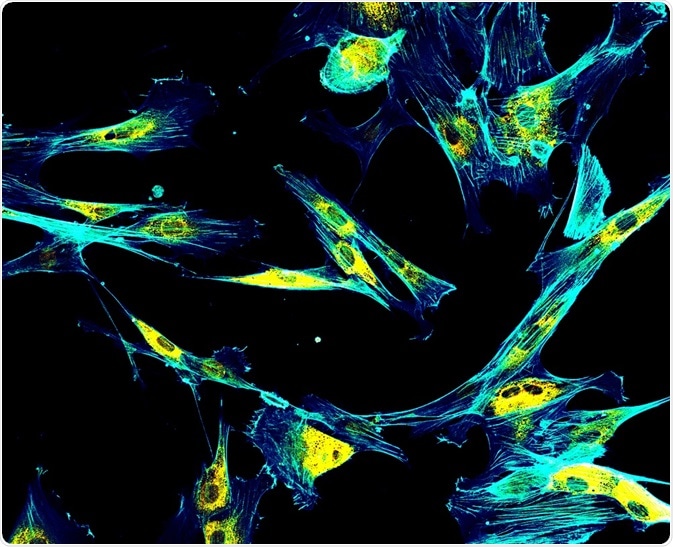Actin is the most abundant protein found in eukaryotes and in certain cell types, it accounts for around 15% of the cellular protein content.
 Credit: DrimaFilm/Shutterstock.com
Credit: DrimaFilm/Shutterstock.com
The actin cytoskeleton is a dynamic network made up of actin polymers and associated actin binding proteins. The actin cytoskeleton was originally isolated as a component of the actomyosin complex in muscle cells and was later identified as a component of all eukaryotic cells.
Functions of the actin cytoskeleton
In combination with the other parts of the cytoskeleton including intermediate filaments and microtubules, the actin cytoskeleton is responsible for mediating various important cellular processes such as cell structural support, axonal growth, cell migration, organelle transport and phagocytosis.
Since actin is so essential to cellular function, its amino acid sequence has been highly conserved throughout evolution. For the actin cytoskeleton to perform these functions, its organization requires tight regulation and many of the associated actin binding proteins are therefore probable targets of the cellular signaling pathways that modulate the assembly of actin.
Assembly of the actin cytoskeleton
The assembly of this cytoskeleton is controlled at many levels including globular actin monomers (G-protein) undergoing reversible polymerization into actin polymers and the superorganization of those polymers into filaments (F-actin) that form a filamentous network that is the primary component of microfilaments.
Actin side-binding proteins, also called cross-linking proteins, mediate the superorganization of these actin polymers into the filamentous network. The actin cytoskeleton is the largest of the organelles and has a highly dynamic structure that quickly alters in shape and organization in response to the stimuli and the different stages of the cell cycle.
Owing to its large size, the actin cytoskeleton can easily alter the morphology of a cell simply by reorganizing itself. This flexibility in organization enables cells to adopt a wide range of shapes that can be easily altered.
The shape and motility of cells is determined by the orientational cellular distribution of actin filaments, which vary greatly in length and form imperfect meshworks. Membrane-associated focal adhesion and adherens junctions provide nucleation sites for the filaments as well as cross-linking the extracellular matrix, the actin cytoskeleton and the plasma membrane. Focal adhesions also serve as sites for signal transduction and induce signaling pathways when adhesion occurs.
Further Reading